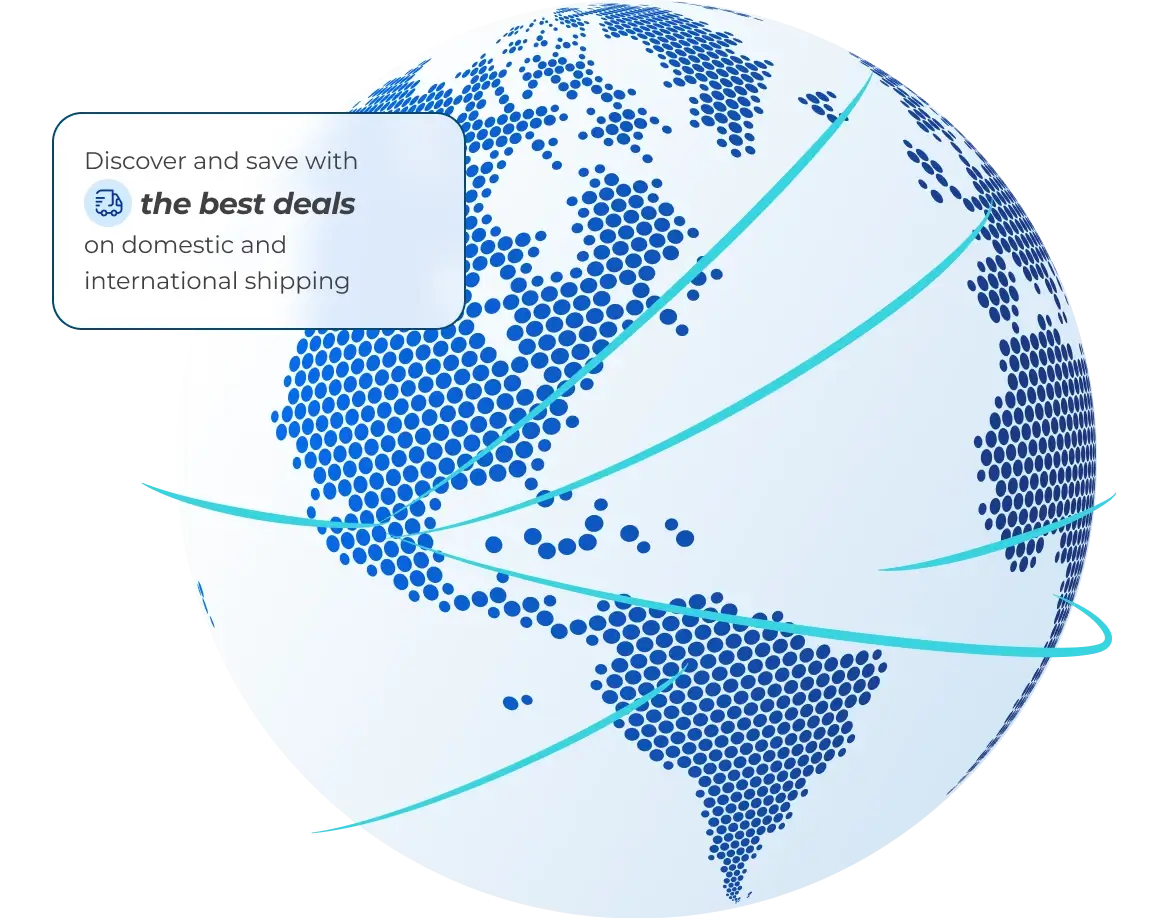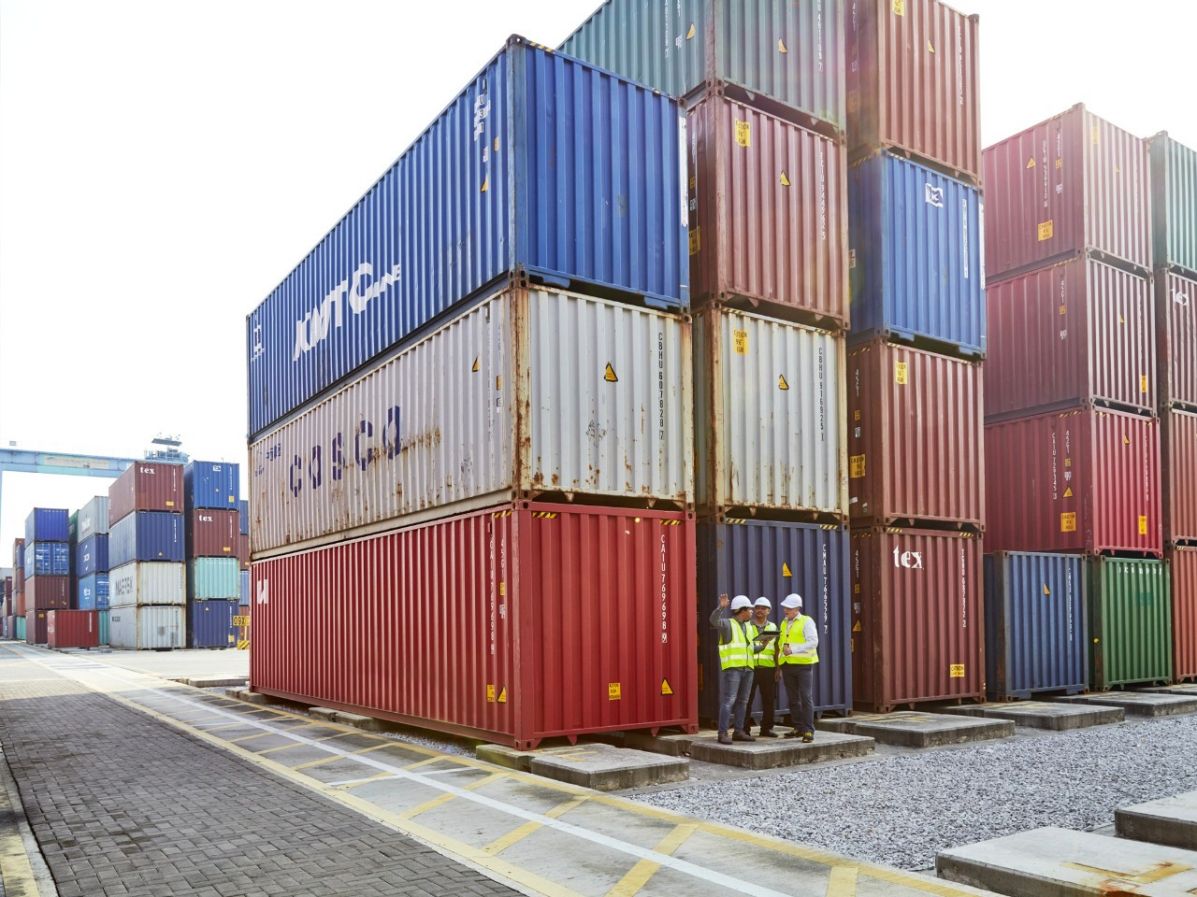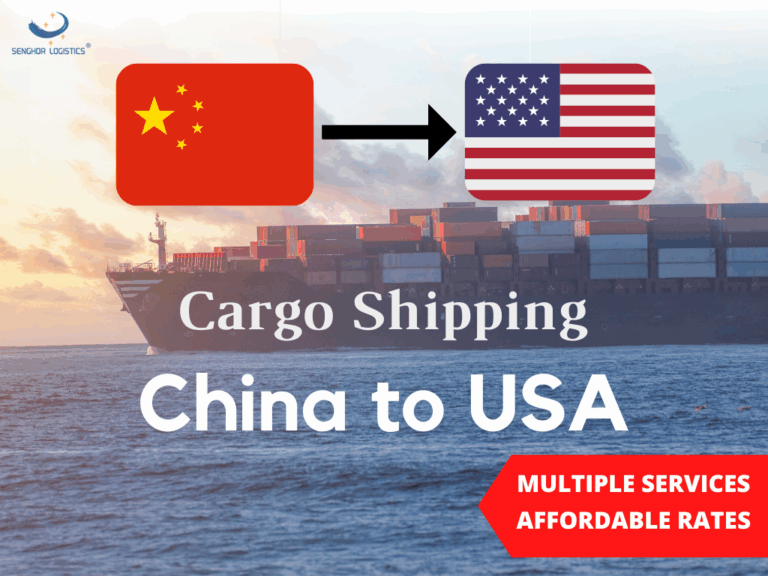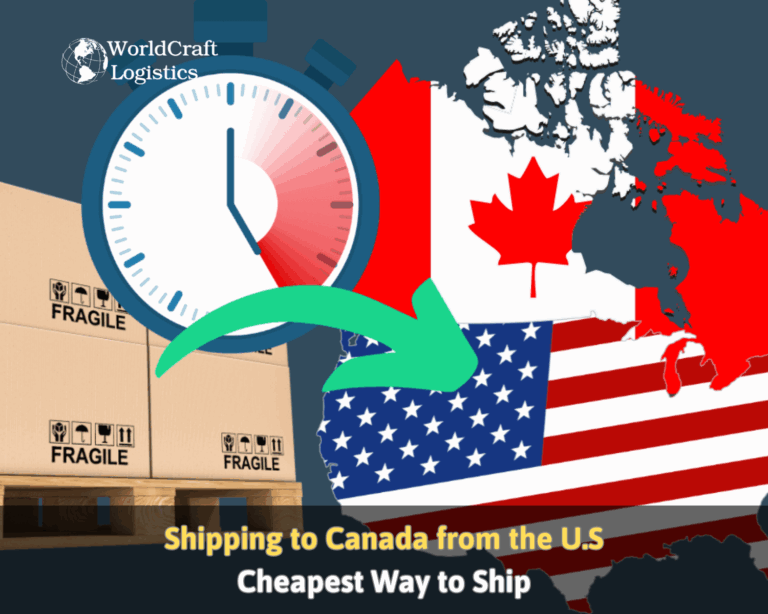The Definitive Guide to Shipping From Home: Rates, Transit & Customs
Your Complete Guide to shipping from home
Navigating the Challenges of Shipping from Home
In today’s global marketplace, businesses face an ever-increasing demand for efficient shipping solutions. For many entrepreneurs and small business owners, the challenge of shipping from home can be daunting. With the complexities of logistics, fluctuating costs, and the intricacies of international regulations, it’s easy to feel overwhelmed. Whether you are an exporter looking to expand your reach or an importer seeking to streamline your operations, understanding the nuances of shipping from home is crucial for success.
One of the primary hurdles in this process is selecting the right shipping method. With various carriers available, each offering different services, rates, and delivery times, finding the most suitable option for your business needs can be a time-consuming task. Additionally, understanding the costs associated with shipping—including postage, packaging, and potential customs fees—adds another layer of complexity. Businesses must also be aware of transit times, as timely delivery is often a critical factor in customer satisfaction.
Customs regulations present another significant challenge when shipping internationally. Ensuring compliance with the varying laws and requirements of different countries is essential to avoid delays and potential fines. This guide will provide valuable insights into how to navigate these regulations efficiently, helping you minimize risks and streamline your shipping process.
Moreover, the risks associated with shipping—such as lost packages, damage, or customs issues—can impact your bottom line. Knowing how to properly insure your shipments and incorporate tracking options can provide peace of mind and enhance your customer service.
In this comprehensive guide, we will delve into the essential areas of shipping from home, covering:

- Shipping Methods: An overview of the major carriers and their respective services.
- Costs: A breakdown of shipping expenses, including tips for saving money.
- Transit Times: Understanding how long different shipping methods take and factors that can affect delivery.
- Customs: Essential information on customs regulations and how to prepare your shipments accordingly.
- Risks: Insights on managing risks, including insurance options and best practices for packaging.
By the end of this guide, you will be equipped with the expert knowledge needed to navigate the intricacies of shipping from home effectively. With the right information at your fingertips, you can streamline your shipping processes, reduce costs, and enhance your overall business operations. Get ready to transform the way you ship and ensure that your products reach your customers seamlessly and efficiently.
Table of Contents
- Your Complete Guide to shipping from home
- Understanding Your Shipping Options: A Detailed Comparison
- Deconstructing the Cost: A Full Pricing Breakdown
- Transit Time Analysis: How Long Will It Take?
- Navigating Customs Clearance: A Step-by-Step Guide
- A Practical Guide to Choosing Your Freight Forwarder
- Incoterms 2020 Explained for Shippers
- Risk Management: Identifying and Mitigating Common Shipping Problems
- Frequently Asked Questions (FAQs) for shipping from home
- Conclusion: Key Takeaways for Successful Shipping
- Important Disclaimer
Understanding Your Shipping Options: A Detailed Comparison
Overview of Shipping Methods
When shipping from home, particularly for international trade, understanding the various transportation methods available is crucial for effective logistics management. Each shipping method comes with its own set of advantages and disadvantages, which can significantly impact delivery speed, cost, and overall efficiency. Below is a comparison of five primary shipping methods: Sea Full Container Load (FCL), Sea Less than Container Load (LCL), Air Freight, Rail, and Express Services.
Comparison Table
| Shipping Method | Best For | Speed | Cost Level | Key Advantages | Key Disadvantages |
|---|---|---|---|---|---|
| Sea FCL | Large shipments (20+ tons) | Slow (20-40 days) | Low | Cost-effective for bulk shipments; full container security | Longer transit times; requires port access |
| Sea LCL | Smaller shipments (under 20 tons) | Moderate (30-60 days) | Moderate | Flexible for small volumes; shared container costs | Risk of delays; less control over shipment timing |
| Air Freight | Urgent shipments | Fast (1-5 days) | High | Quick delivery; ideal for high-value items | Higher costs; weight limitations |
| Rail | Domestic bulk shipments | Moderate (2-10 days) | Moderate | Reliable for land transport; environmentally friendly | Limited reach; slower than air |
| Express Services | Time-sensitive packages | Very fast (1-3 days) | Very High | Door-to-door service; tracking available | Very costly; size and weight restrictions |
Detailed Breakdown of Each Method
Sea Full Container Load (FCL)
What It Is:
FCL shipping involves a single shipper using an entire container to transport goods. This method is ideal for larger shipments, typically exceeding 20 tons.
When to Use:
Use FCL when you have enough cargo to fill a full container, which can range from 20 to 40 feet in length.
Pros:
– Cost-Effective: Lower shipping rates per unit for large volumes.
– Security: Less handling of goods reduces the risk of damage or loss.
– Flexibility: Various container types available (reefer, flat rack, etc.).
Cons:
– Long Transit Times: Shipping can take several weeks, depending on the route.
– Port Access Required: Must have access to shipping ports, which can be a logistical challenge.

Sea Less than Container Load (LCL)
What It Is:
LCL shipping allows multiple shippers to share space in a single container, making it suitable for smaller shipments.
When to Use:
Choose LCL when your cargo volume does not justify the cost of an entire container.
Pros:
– Cost-Effective for Small Shipments: You only pay for the space you use.
– Flexibility: Can ship smaller quantities without waiting to fill a container.
Cons:
– Risk of Delays: Shared shipping can lead to longer wait times.
– Less Control: Timing can be unpredictable due to shared loading and unloading schedules.
Air Freight
What It Is:
Air freight involves shipping goods via commercial or cargo airlines, making it the fastest shipping method available.
When to Use:
Best for high-value items or urgent deliveries, such as electronics or medical supplies.
Pros:
– Speed: Quick delivery times, often within 1-5 days.
– Reliability: Airlines generally adhere to strict schedules.
Cons:
– High Costs: Air freight is significantly more expensive than other methods.
– Weight Limitations: Airlines impose strict weight restrictions, which can limit shipment sizes.
Rail
What It Is:
Rail shipping involves transporting goods via freight trains, primarily used for domestic shipments.
When to Use:
Ideal for bulk shipments over land, especially in regions with extensive rail networks.
Pros:
– Eco-Friendly: Lower carbon footprint compared to road transport.
– Cost-Effective for Bulk: Competitive rates for large quantities.
Cons:
– Limited Reach: Rail networks may not reach all destinations, requiring additional transport methods.
– Slower Transit Times: Typically slower than air freight, but faster than sea.
Express Services
What It Is:
Express shipping services offer expedited delivery, often door-to-door, and are provided by companies like DHL, FedEx, and UPS.
When to Use:
Use for time-sensitive packages that require immediate delivery.
Pros:
– Fast Delivery: Typically within 1-3 days.
– Tracking and Insurance: Comprehensive tracking and insurance options available.
Cons:
– Very High Costs: Premium pricing can make this option prohibitive for larger shipments.
– Size and Weight Restrictions: Limited to smaller packages, often under 150 lbs.
Special Considerations
Multimodal Transport
Multimodal transport combines two or more modes of transport to optimize shipping efficiency. For example, goods may be shipped by rail to a port and then transferred to a vessel for international delivery. This approach can reduce overall transit times and costs while leveraging the strengths of each mode.
Specialized Options
-
RoRo (Roll-on/Roll-off): Ideal for vehicles and heavy machinery, RoRo vessels allow vehicles to be driven directly onto the ship, making loading and unloading efficient.
-
Break Bulk: This method is used for large, heavy items that cannot be shipped in containers. Each piece is loaded individually, which can be time-consuming and costly but is essential for specific cargo types.
Conclusion
Selecting the right shipping method when shipping from home involves considering various factors, including shipment size, urgency, and cost. By understanding the strengths and weaknesses of each method, international shippers, importers, exporters, and business owners can make informed decisions that optimize their logistics strategy and enhance customer satisfaction.
Deconstructing the Cost: A Full Pricing Breakdown
Understanding Shipping Costs
When shipping from home, whether for personal or business purposes, understanding the various cost components is crucial for effective budgeting. Shipping costs can vary widely based on several factors, including the mode of transport, the destination, and the nature of the goods being shipped. Below is a comprehensive breakdown of the main cost components associated with shipping from home.
Main Cost Components
Shipping costs can be broadly categorized into three primary components:
- Main Freight
- Origin Charges
- Destination Charges
Main Freight
Main freight refers to the core cost of transporting goods from the point of origin to the destination. This cost varies significantly based on the mode of transport (air, sea, or land) and the distance involved.
Influencing Factors:
- Mode of Transport: Air freight is generally more expensive than sea freight due to speed and handling capabilities. For example, shipping a package via air might cost $5 to $10 per kilogram, whereas sea freight for the same weight could be significantly less, especially for bulk shipments.
- Distance: Longer distances typically incur higher freight costs. Factors like fuel prices and shipping routes also play a role.
- Weight and Volume: Heavier and bulkier items may lead to higher shipping costs, particularly in air freight where both weight and dimensional weight can affect pricing.
Origin Charges
Origin charges are fees incurred at the point of shipment. These costs can include packaging, handling, and documentation fees.
Influencing Factors:
- Packaging: The type of packaging used can impact the cost. Standard boxes may be cheaper than specialized packaging.
- Handling Fees: Charges for loading and unloading the shipment can vary based on the shipping provider and location.
- Documentation: Costs associated with customs documentation, bills of lading, and other paperwork may apply, especially for international shipments.
Destination Charges
Destination charges are incurred once the shipment reaches its destination. These costs can include delivery fees, terminal handling charges, and customs duties.
Influencing Factors:
- Delivery Method: The choice between standard delivery and expedited services can influence costs. For example, same-day delivery typically incurs higher charges.
- Customs Duties: For international shipments, customs duties and taxes may apply, significantly increasing the overall cost.
- Local Handling Fees: Charges for unloading and processing at the destination port or terminal can vary based on local tariffs and regulations.
Example Pricing Table
The following table provides a sample breakdown of estimated costs for shipping from China to the USA. Please note that these figures are estimates and actual costs may vary based on the specific shipping provider and market conditions.
| Shipping Method | 20ft Container | 40ft Container | LCL (Less than Container Load) | Air Freight (per kg) |
|---|---|---|---|---|
| Estimated Cost | $3,000 – $5,000 | $5,000 – $8,000 | $100 – $150 per cubic meter | $5 – $10 |
Disclaimer: The above costs are estimates and can fluctuate based on market conditions, shipping routes, and specific service providers. Always consult with a freight forwarder for precise quotes.
How to Reduce Costs
Shipping costs can be a significant expense for businesses. Here are some actionable tips to help reduce these costs:
-
Optimize Packaging: Use appropriate-sized boxes to reduce dimensional weight charges. Consider using flat-rate shipping options when feasible.
-
Negotiate Rates: If you frequently ship, engage your shipping provider in negotiations for better rates based on your shipping volume.
-
Consolidate Shipments: Combine multiple shipments into one to take advantage of bulk shipping rates and reduce individual handling costs.
-
Choose the Right Shipping Method: Evaluate the urgency of your shipments. Opting for sea freight over air freight can lead to significant savings for non-time-sensitive shipments.
-
Utilize Free Supplies: Many carriers, such as USPS and UPS, offer free shipping supplies. Use these to save on packaging costs.
-
Schedule Pickups Wisely: Take advantage of free pickup services offered by carriers, but ensure you schedule them during regular delivery times to avoid additional fees.
-
Stay Informed on Rates: Regularly check and compare shipping rates from different carriers. Many online platforms provide tools to compare costs across various shipping methods.
Conclusion
Understanding the full breakdown of shipping costs can empower businesses to make informed decisions and optimize their shipping strategies. By considering the main cost components, analyzing pricing factors, and implementing cost-saving measures, businesses can effectively manage their shipping expenses while ensuring timely and efficient delivery of goods.
Transit Time Analysis: How Long Will It Take?
Understanding Transit Times for Shipping from Home
When shipping from home, understanding the transit times is crucial for managing expectations and ensuring timely delivery. Several factors can influence these transit times, including the mode of shipping, port congestion, customs clearance, route efficiency, and even weather conditions.
Factors Influencing Transit Time
-
Shipping Mode: The choice between sea freight and air freight significantly impacts transit times. Air freight is faster but often more expensive, making it suitable for urgent shipments. Sea freight, while more economical for larger volumes, can take considerably longer due to the time spent at sea.
-
Port Congestion: Major shipping hubs can experience delays due to congestion. High volumes of cargo, labor strikes, or operational inefficiencies can slow down the processing of shipments, leading to extended transit times.
-
Customs Clearance: International shipments must clear customs in both the exporting and importing countries. Delays can occur if documentation is incomplete, if duties or taxes are owed, or if shipments are selected for inspection. Understanding customs regulations and ensuring all paperwork is in order can help mitigate these delays.
-
Routes: The efficiency of the shipping route chosen can also affect transit time. Direct routes are faster, while those that involve multiple stops or transshipments can add days to the delivery timeline.
-
Weather Conditions: Adverse weather can lead to delays, particularly in air freight. Storms, snow, and other severe weather conditions can cause flight cancellations and shipping disruptions, impacting overall transit times.
Estimated Transit Time Table
To provide a clearer perspective on transit times, the following table summarizes realistic estimates for common shipping routes:
| Origin | Destination | Sea Freight (Days) | Air Freight (Days) |
|---|---|---|---|
| China | USA | 20-40 | 3-5 |
| Germany | USA | 15-30 | 5-7 |
| Australia | USA | 25-45 | 5-8 |
| USA | Germany | 10-25 | 5-7 |
| USA | Australia | 20-30 | 5-10 |
| China | Australia | 15-30 | 4-6 |
Context and Explanation
The transit times outlined in the table are estimates from port to port and do not account for additional time required for domestic handling, pickup, or final delivery. When planning shipments, businesses should consider these estimates as starting points and factor in potential delays due to customs, weather, and congestion.
For example, while air freight from China to the USA may take as little as three days, any delays at customs could extend that timeline significantly. Similarly, while sea freight may be more economical for large shipments, it is essential to plan for the possibility of delays due to port congestion, especially during peak shipping seasons.
To optimize your shipping strategy:
- Choose the Right Shipping Mode: Assess your budget and urgency to select the most appropriate shipping method.
- Stay Informed: Monitor potential delays at ports and be aware of customs regulations for your specific goods.
- Plan Ahead: Incorporate buffer time into your shipping schedule to account for unforeseen delays.
By understanding these factors and planning accordingly, international shippers, importers, exporters, and business owners can better manage their shipping timelines and enhance customer satisfaction.
Navigating Customs Clearance: A Step-by-Step Guide
The Process Explained
Navigating customs clearance can be a complex task, especially when shipping internationally from home. However, understanding the workflow can simplify the process significantly. Here’s a step-by-step guide to help you through customs clearance:
-
Prepare Your Shipment: Start by accurately packing your items in a sturdy box, ensuring that you have considered any specific packaging requirements for your goods. Remove any old shipping labels and seal the box securely.
-
Complete the Necessary Documentation: Gather all required documents such as the Commercial Invoice, Packing List, and any additional forms specific to the destination country. This documentation will be critical in the customs clearance process.
-
Label Your Package: Clearly label your package with the recipient’s address, including any necessary customs declarations. Ensure that the labels are securely attached and easy to read.
-
Determine Duties and Taxes: Research the duties and taxes applicable to your shipment. This includes understanding the Harmonized System (HS) Codes associated with your items, as these codes help customs determine the applicable tariffs.
-
Submit Your Shipment: Choose a reliable shipping carrier that offers international services, such as USPS, UPS, or FedEx. Schedule a pickup or drop off your package at the shipping location.
-
Track Your Shipment: Utilize the tracking services provided by your shipping carrier to monitor the progress of your shipment. This will help you stay informed about any customs clearance issues that may arise.
-
Respond to Customs Inquiries: Be prepared to provide additional information or documentation if customs officials request it. Prompt responses can help expedite the clearance process.
Essential Documentation
When shipping internationally, accurate and complete documentation is crucial for smooth customs clearance. Below are the essential documents typically required:
-
Commercial Invoice: This is a detailed document that outlines the items being shipped, their value, and the reason for export. It serves as a contract between the buyer and seller and is used by customs to assess duties and taxes.
-
Packing List: This document lists all items contained in the shipment, including their weight and dimensions. It assists customs officials in verifying the contents of the package and is often required for customs clearance.
-
Bill of Lading (BOL): This is a legal document between the shipper and carrier, detailing the type, quantity, and destination of the goods being shipped. It serves as a receipt for the cargo and outlines the terms of the transportation agreement.
-
Export Declaration: Depending on the value and type of goods, you may need to file an export declaration with the appropriate government authority. This document provides information on the shipment for export control purposes.
-
Certificates of Origin: Some countries require a certificate of origin to verify where the goods were manufactured. This may affect the duty rates applicable to your shipment.
Duties, Taxes, and HS Codes
Understanding duties, taxes, and HS Codes is essential for calculating the costs associated with international shipping.
-
HS Codes: The Harmonized System (HS) is an internationally standardized system of names and numbers used to classify traded products. Each product is assigned a unique HS Code, which helps customs authorities determine the applicable duties and taxes. Accurate classification of your goods is vital to avoid delays and penalties.
-
Duties and Taxes Calculation: Duties are taxes imposed on imported goods, and they can vary significantly based on the HS Code, the country of origin, and the destination country. To calculate duties and taxes:
- Identify the correct HS Code for your product.
- Determine the customs value of your goods (usually the purchase price plus shipping costs).
- Apply the duty rate associated with the HS Code to the customs value to find the total duties owed.
Common Problems & Solutions
While navigating customs clearance, shippers may encounter various challenges. Here are some common issues and practical solutions:
-
Incomplete Documentation: Missing or incorrect documentation can lead to delays.
Solution: Double-check all required documents and ensure they are filled out accurately before shipping. Use a checklist to verify that all necessary paperwork is included. -
Incorrect HS Code Assignment: Misclassifying goods can result in incorrect duty assessments and potential fines.
Solution: Research and confirm the correct HS Code for your products. Utilize resources like customs databases or consult with a customs broker if needed. -
Unexpected Duties and Taxes: Shippers may be surprised by high duties or taxes upon arrival.
Solution: Research the destination country’s tariff regulations beforehand and calculate potential duties and taxes based on the HS Codes of your products. -
Customs Inspections: Packages may be selected for random inspections, causing delays.
Solution: Ensure your packaging is compliant with shipping regulations and that all documentation is readily available to facilitate a quicker inspection process. -
Failure to Respond to Customs Queries: Customs officials may request additional information, and failure to respond can result in shipment delays or returns.
Solution: Monitor your shipment’s status regularly and be prepared to provide any requested information promptly.
By following this guide, you can navigate the customs clearance process more effectively and minimize potential issues when shipping from home. Understanding the requirements and preparing adequately will lead to a smoother shipping experience, allowing you to focus on your core business activities.
A Practical Guide to Choosing Your Freight Forwarder
Understanding the Role of a Freight Forwarder
Shipping from home can be a daunting task, especially when dealing with international logistics. A freight forwarder serves as an intermediary between you and various transportation services, ensuring that your goods are transported efficiently and legally. Choosing the right freight forwarder can make a significant difference in your shipping experience, from cost-effectiveness to timely deliveries.
Key Qualities to Look For
When selecting a freight forwarder, consider the following essential attributes:
-
Experience: Look for a freight forwarder with a proven track record in the shipping industry. Experienced forwarders are more likely to navigate challenges effectively and provide reliable service.
-
Network: A robust network of carriers, agents, and customs brokers is crucial. This ensures that your shipments can be routed efficiently and that you have access to competitive rates.
-
Licensing and Certifications: Verify that the freight forwarder holds the necessary licenses and certifications, such as those from the Federal Maritime Commission (FMC) in the USA or the International Air Transport Association (IATA) for air cargo. This ensures compliance with regulations and industry standards.
-
Communication: Effective communication is vital for smooth operations. Your freight forwarder should provide regular updates and be readily available to address your concerns. Look for a forwarder that utilizes technology for tracking shipments and offers a user-friendly interface for managing your logistics.
-
Customer Support: A dedicated customer service team can make a significant difference, especially when issues arise. Ensure that your forwarder offers responsive support through multiple channels.
-
Insurance Options: Your freight forwarder should provide options for cargo insurance to protect your shipments against loss or damage. This can give you peace of mind, especially for high-value items.
Sourcing Checklist
To streamline your search for a freight forwarder, follow this comprehensive checklist:
-
Define Your Needs: Identify your specific shipping requirements, including the types of goods, destination countries, and frequency of shipments. This clarity will help you find a forwarder that specializes in your area.
-
Research Options: Utilize online resources, industry directories, and recommendations from business peers to compile a list of potential freight forwarders. Pay attention to their specialization, geographical reach, and customer reviews.
-
Request Quotes: Contact the shortlisted freight forwarders to obtain quotes. Provide them with detailed information about your shipping needs to receive accurate pricing. Compare not only the costs but also the services included in each quote.
-
Ask Questions: Engage with the forwarders to clarify any doubts. Inquire about their experience, the technology they use, their approach to customs clearance, and how they handle delays or issues.
-
Check References: Request references from current or past clients. Speaking directly with others who have used the freight forwarder can provide valuable insights into their reliability and service quality.
Red Flags to Watch For
While searching for the right freight forwarder, be cautious of these warning signs:
-
Lack of Transparency: If a forwarder is vague about their pricing structure or services, it could indicate hidden fees or inadequate service.
-
No Established Network: A forwarder without a solid network may struggle to deliver your shipments efficiently and could lead to delays.
-
Poor Communication: If your inquiries are met with delayed responses or unclear answers, this may be a sign of future communication issues.
-
Negative Reviews: Look for consistent negative feedback regarding service quality, delays, or customer support. A few bad reviews can be normal, but a pattern of complaints is concerning.
-
No Licensing: A legitimate freight forwarder should be able to provide proof of necessary licenses and certifications. If they cannot, consider this a significant red flag.
-
High Pressure Sales Tactics: If a forwarder is overly aggressive in trying to secure your business, it may indicate desperation or a lack of confidence in their service.
Conclusion
Choosing the right freight forwarder is crucial for successful shipping from home, especially for international shipments. By focusing on key qualities, following a detailed sourcing checklist, and being mindful of red flags, you can make an informed decision. A reliable freight forwarder will not only facilitate smoother logistics but also contribute to the overall success of your shipping endeavors. Take the time to evaluate your options, as this can ultimately save you time, money, and stress in the long run.
Incoterms 2020 Explained for Shippers
What are Incoterms?
Incoterms, short for International Commercial Terms, are standardized trade terms that define the responsibilities of buyers and sellers in international transactions. Established by the International Chamber of Commerce (ICC), these terms clarify who pays for shipping, insurance, and tariffs, and at what point the risk of loss or damage transfers from the seller to the buyer. For international shippers, understanding Incoterms is crucial for avoiding misunderstandings and ensuring smooth shipping processes, especially when shipping from home.
Key Incoterms Table
| Incoterm | Who Pays for Transport? | Where Risk Transfers? | Best for |
|---|---|---|---|
| EXW (Ex Works) | Buyer | At the seller’s premises | Buyers wanting maximum control over shipping |
| FOB (Free On Board) | Seller | When goods are loaded onto the vessel | Sellers managing shipping to port |
| CIF (Cost, Insurance, and Freight) | Seller | When goods are loaded onto the vessel | Buyers wanting insurance included |
| DDP (Delivered Duty Paid) | Seller | At the buyer’s premises | Buyers wanting a hassle-free delivery |
Detailed Explanation of Common Incoterms
EXW (Ex Works)
With EXW, the seller’s obligation is minimal. They only need to make the goods available at their premises or another named place (factory, warehouse, etc.). The buyer assumes all responsibility for transport, insurance, and customs clearance from that point onward. This term is ideal for buyers who want maximum control over the shipping process but also means they bear all the risks and costs. For example, if you run a business from home in Australia and purchase raw materials from a supplier in Germany under EXW terms, you would be responsible for arranging and paying for all transportation and insurance from the supplier’s location to your home.
FOB (Free On Board)
FOB places more responsibility on the seller. Under this term, the seller is responsible for transporting the goods to the port of shipment and loading them onto the vessel. The risk transfers to the buyer once the goods are on board. This term is commonly used in maritime shipping and is favorable for sellers who want to manage logistics up to the point of loading. For instance, if you are exporting products from the USA to customers in Europe, choosing FOB means you will cover all costs and risks until your goods are loaded onto the shipping vessel.
CIF (Cost, Insurance, and Freight)
CIF is similar to FOB but includes additional responsibilities for the seller. In this case, the seller pays for the cost of freight and insurance to the destination port. The risk transfers to the buyer once the goods are loaded onto the vessel, but the seller bears the costs associated with transport and insurance until that point. This term is beneficial for buyers who prefer to have insurance coverage during transit. For example, if you are an importer in Germany purchasing electronics from the USA, CIF terms ensure that your supplier will cover the shipping costs and insurance until the products reach the German port, mitigating some of your risks.
DDP (Delivered Duty Paid)
DDP represents the highest level of obligation for the seller. Under this term, the seller is responsible for all costs, risks, and responsibilities until the goods are delivered to the buyer’s premises, including import duties and taxes. This term is ideal for buyers who want a hassle-free shipping experience, as the seller handles all logistics. For example, if you operate an e-commerce business in the USA and sell to customers in Australia, using DDP would mean that your suppliers would cover all shipping costs and customs duties, delivering the products directly to your customers without any additional burden on them.
Conclusion
Understanding Incoterms 2020 is essential for international shippers, particularly those shipping from home. By selecting the appropriate Incoterm, businesses can streamline their shipping processes, clarify responsibilities, and manage risks effectively. Whether you are a seller looking to minimize your obligations or a buyer wanting peace of mind, knowing these terms can significantly enhance your shipping experience.
Risk Management: Identifying and Mitigating Common Shipping Problems
Introduction
In the world of international shipping, proactive risk management is essential for businesses operating from home. Shipping involves numerous uncertainties, from potential cargo damage to delays in delivery and customs holds. These risks can adversely affect customer satisfaction, increase operational costs, and disrupt supply chains. Therefore, understanding and mitigating these risks is crucial for ensuring smooth shipping operations. This guide outlines common shipping problems and provides strategies to identify and manage these risks effectively.
Risk Analysis Table
Here is a comprehensive overview of potential risks associated with shipping from home, their impacts, and mitigation strategies:
| Potential Risk | Impact | Mitigation Strategy |
|---|---|---|
| Cargo Damage | Loss of goods, increased costs for replacements, customer dissatisfaction. | Use high-quality packaging materials and cushioning. Insure valuable items. |
| Delays | Late deliveries can lead to lost sales and poor customer reviews. | Choose reliable carriers, monitor shipment status, and communicate proactively with customers. |
| Customs Holds | Increased shipping time and potential fines or additional fees. | Ensure all documentation is accurate and complete. Use a customs broker if necessary. |
| Mislabeling | Incorrect delivery, returns, and additional shipping costs. | Double-check labels for accuracy. Utilize automated shipping software to reduce human error. |
| Regulatory Compliance | Legal penalties and shipment delays due to non-compliance with shipping regulations. | Stay updated on international shipping laws and regulations. Train staff on compliance. |
| Theft or Loss | Financial losses and damage to business reputation. | Use secure shipping methods, opt for tracked services, and consider insurance coverage. |
Cargo Insurance Explained
What It Covers
Cargo insurance is a critical component of risk management for shippers. It provides coverage against loss or damage to goods while in transit. The types of coverage typically include:
- All-Risk Coverage: This comprehensive policy covers most risks associated with shipping, including theft, damage, and loss, with few exclusions.
- Named Perils Coverage: This policy only covers risks explicitly listed, such as fire, collision, or theft, making it less comprehensive than all-risk coverage.
- General Average: This coverage applies when a portion of the cargo is sacrificed to save the whole shipment, such as in the event of a shipwreck.
Why It’s Essential
Having cargo insurance is crucial for several reasons:
- Financial Protection: It safeguards businesses against substantial financial losses that can occur due to unforeseen incidents during transit.
- Peace of Mind: Knowing that shipments are insured allows business owners to focus on other operational aspects without the constant worry of potential losses.
- Customer Confidence: Offering insured shipping options can enhance customer trust, as it demonstrates a commitment to safeguarding their purchases.
Conclusion
By proactively identifying and managing shipping risks, businesses can enhance their operational efficiency, protect their bottom line, and improve customer satisfaction. Implementing the strategies outlined in this guide, along with securing appropriate cargo insurance, will equip international shippers, importers, exporters, and home-based business owners with the tools necessary to navigate the complexities of global shipping successfully.
Frequently Asked Questions (FAQs) for shipping from home
1. How can I ship packages from home?
To ship packages from home, you can use services such as USPS Click-N-Ship, UPS Online Shipping, or FedEx Ship Manager. These platforms allow you to purchase postage, print shipping labels, and schedule package pickups—all from the comfort of your home. Simply create an account, enter your shipment details, and follow the prompts to complete your shipping process.
2. What are the costs associated with shipping from home?
Shipping costs depend on various factors, including package weight, dimensions, destination, and the shipping service you choose (e.g., standard vs. expedited). Many carriers offer online tools to calculate shipping costs before you finalize your shipment. Additionally, businesses can often access discounted rates through services like USPS’s Business Rate Card.
3. What is chargeable weight, and how is it calculated?
Chargeable weight is the weight used by shipping carriers to determine the cost of shipping a package. It can be based on actual weight or dimensional weight, whichever is greater. Dimensional weight is calculated by multiplying the package’s length, width, and height (in inches) and dividing by a specific divisor (usually 166 for domestic shipments in the U.S.). Understanding chargeable weight is crucial for accurate shipping cost estimation.
4. Can I ship without a printer?
Yes, you can ship without a printer by using services like USPS Label Broker, where you can generate a QR code for your shipping label and bring it to a participating Post Office for printing. Alternatively, USPS offers a Label Delivery service, which sends a physical shipping label to your address for a small fee.
5. What is the difference between a Bill of Lading (BOL) and an Air Waybill (AWB)?
A Bill of Lading (BOL) is a document used for ground shipments, serving as a contract between the shipper and the carrier, detailing the type, quantity, and destination of the goods. An Air Waybill (AWB) is similar but specifically used for air freight. It acts as a receipt for the goods and provides tracking information. Both documents are crucial for shipping logistics and customs clearance.
6. What should I do if my package is lost or damaged during shipping?
If your package is lost or damaged, first contact the shipping carrier to report the issue. Most carriers offer insurance options that cover loss or damage, but you may need to file a claim. Ensure you have all necessary documentation, including tracking numbers and any proof of value for the contents. Each carrier has specific procedures for claims, so follow their guidelines closely.
7. How can I track my shipment?
Most shipping carriers provide tracking services that allow you to monitor the status of your shipment. After you purchase shipping and print your label, you will receive a tracking number. You can enter this number on the carrier’s website or app to see real-time updates on your package’s location and estimated delivery time.
8. What customs documentation do I need for international shipping?
When shipping internationally, you typically need a customs declaration form, which details the contents of the package, their value, and the purpose of the shipment (e.g., gift, sale). Depending on the destination country and the nature of the items, you may also need additional documentation, such as commercial invoices or permits. It’s essential to check the specific customs requirements for the destination country to avoid delays.
9. What are the best practices for packaging items for shipping?
To ensure your items arrive safely, use sturdy boxes and appropriate packing materials. Wrap fragile items in bubble wrap or packing paper, and use cushioning materials (like foam peanuts) to fill empty spaces in the box. Seal your package securely with strong tape, and avoid reusing boxes with old labels. Label your package clearly with both the sender’s and recipient’s addresses.
10. How can I schedule a pickup for my packages?
You can schedule a pickup for your packages through the shipping carrier’s website or app. For example, USPS allows you to schedule free package pickups during regular mail delivery. UPS and FedEx also provide options for scheduling pickups online, often with varying fees depending on the service level. Be sure to have your package ready for collection at the designated time.
Conclusion: Key Takeaways for Successful Shipping
Essential Strategies for Effective Home Shipping
Successfully shipping from home requires careful planning and strategic partnerships. First and foremost, understand your shipping needs. Identify the types of products you’ll be sending, their destinations, and the preferred shipping methods. This foundational knowledge enables you to choose the right carriers and services that align with your business model.
Selecting the right shipping partners is crucial. Research various carriers, such as USPS, UPS, and FedEx, to determine which offers the best rates and services for your needs. Each carrier has unique strengths; for instance, USPS offers competitive flat-rate shipping options, while UPS may provide superior tracking capabilities. Leverage these strengths to optimize your shipping process and enhance customer satisfaction.
Cost management plays a pivotal role in your shipping strategy. Familiarize yourself with the various pricing structures and potential discounts available. For instance, utilizing services like USPS’s Click-N-Ship can provide lower commercial rates, which is beneficial for businesses shipping regularly. Additionally, consider bulk shipping discounts and other cost-saving options, such as scheduling pickups to avoid travel time and expenses.
Lastly, stay organized and proactive. Use technology to streamline your shipping processes—tools that allow you to print labels, track shipments, and manage inventory can save you time and reduce errors. Regularly review your shipping practices to identify areas for improvement and adapt to changing market conditions.
By focusing on planning, choosing the right partners, managing costs, and utilizing technology, you can enhance your shipping efficiency and profitability.
Take Action Now!
Start implementing these strategies today to transform your home shipping process into a seamless operation. Whether you’re a seasoned exporter or just starting out, the right approach can lead to significant improvements in both customer satisfaction and your bottom line. Embrace the opportunities that efficient shipping presents for your business growth!
Important Disclaimer
⚠️ Important Disclaimer
The information in this guide is for educational purposes only and does not constitute professional logistics advice. Rates, times, and regulations change frequently. Always consult with a qualified freight forwarder for your specific needs.





